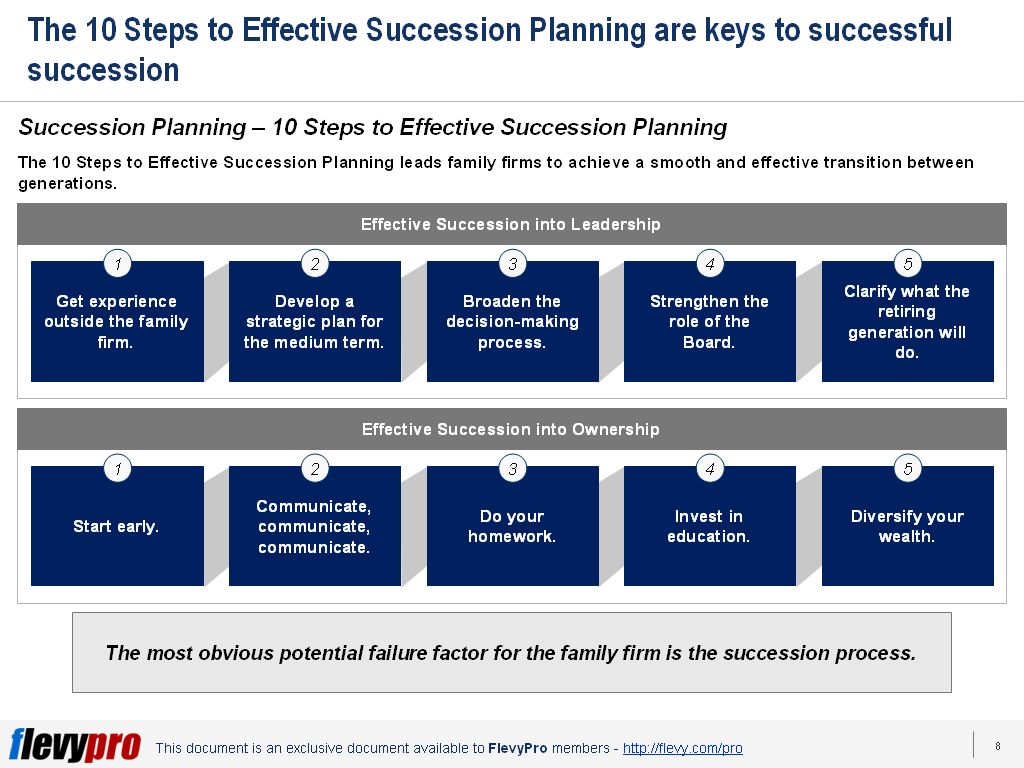Effective Succession Planning in Family Business has been redefined in the 21st century.
The Family Business sector continues to be vibrant, successful, and ambitious. This, despite tough economic conditions and accelerating pace of change. Family firms are vital to all economies. It offers stability, a commitment for the long term, and a responsibility to their communities and employees.
However, despite the extraordinary longevity of individual family firms, the average life span across the sector is three generations. Only very few get past four generations. Not surviving the transition to the next generation may be a sign of a Family Business not achieving their long-term ambitions.
What is Succession Planning
Succession Planning is the process of establishing goals and then mapping a path towards onward. It includes traversing the landscape and avoiding the various challenges that succession presents. Companies encounter certain considerations. They are faced with issues relating to retention of the intended successor, the possibility of jealousy by other employees, and how employees respond to the succession plan.
When addressing these concerns, it becomes essential that Family Business must create a disciplined succession process. When succession planning is undertaken, it improves chances for business continuity. As a famous saying goes, “Failing to plan means planning to fail.”
The 10 Steps to Effective Succession Planning
A well-managed succession process is a rallying point for family firms to reinvent itself and find new energy for growth.
Effective Succession into Leadership focuses on building up internal capabilities and strengths.
- Get experience outside the family firm. This brings a broad range of experience to the task of leadership that can be beneficial to the family firm.
- Develop a strategic plan for the medium term. In developing a strategic plan for the medium, it is essential that this is consulted with all the shareholders.
- Broaden the decision-making process. Broadening the decision-making process includes making decisions collectively.
- Strengthen the role of the Board. This step enables the Board to have a key role in overseeing the succession process.
- Clarify what the retiring generation will do. Undertaking the fifth step ensures prevention or proper management of any misunderstanding that may arise.
Effective Succession into Ownership focuses on early preparation and full collaboration to achieve effective ownership transition.
- Start early. Family firms are encouraged to start the process as early as possible.
- Communicate, communicate, communicate. The second step to effective succession into ownership makes sure that everyone with a stake in the future has a say when it comes to the succession process and the transition of ownership.
- Do your homework. Succession planning may involve approaches that can cause difficulties depending on circumstances and jurisdiction. It is essential that family businesses do their homework.
- Invest in education. Investing in education is an essential part of succession. People running the business must have the right expertise.
- Diversify your wealth. The fifth step to effective succession into ownership focuses on building assets outside the family firm.
Members of Family Businesses must understand that an effective succession into ownership is not an end but must be viewed as the beginning. Hence, every step that is required in succession planning must be done with clear direction and purpose. For, in the final analysis, succession planning creates lasting legacies for the business. But this can only happen when it is done right.
Interested in gaining more understanding of the effective Succession Planning in Family Businesses? You can learn more and download an editable PowerPoint about Family Business: Effective Succession Planning here on the Flevy documents marketplace.
Are you a management consultant?
You can download this and hundreds of other consulting frameworks and consulting training guides from the FlevyPro library.

Comments